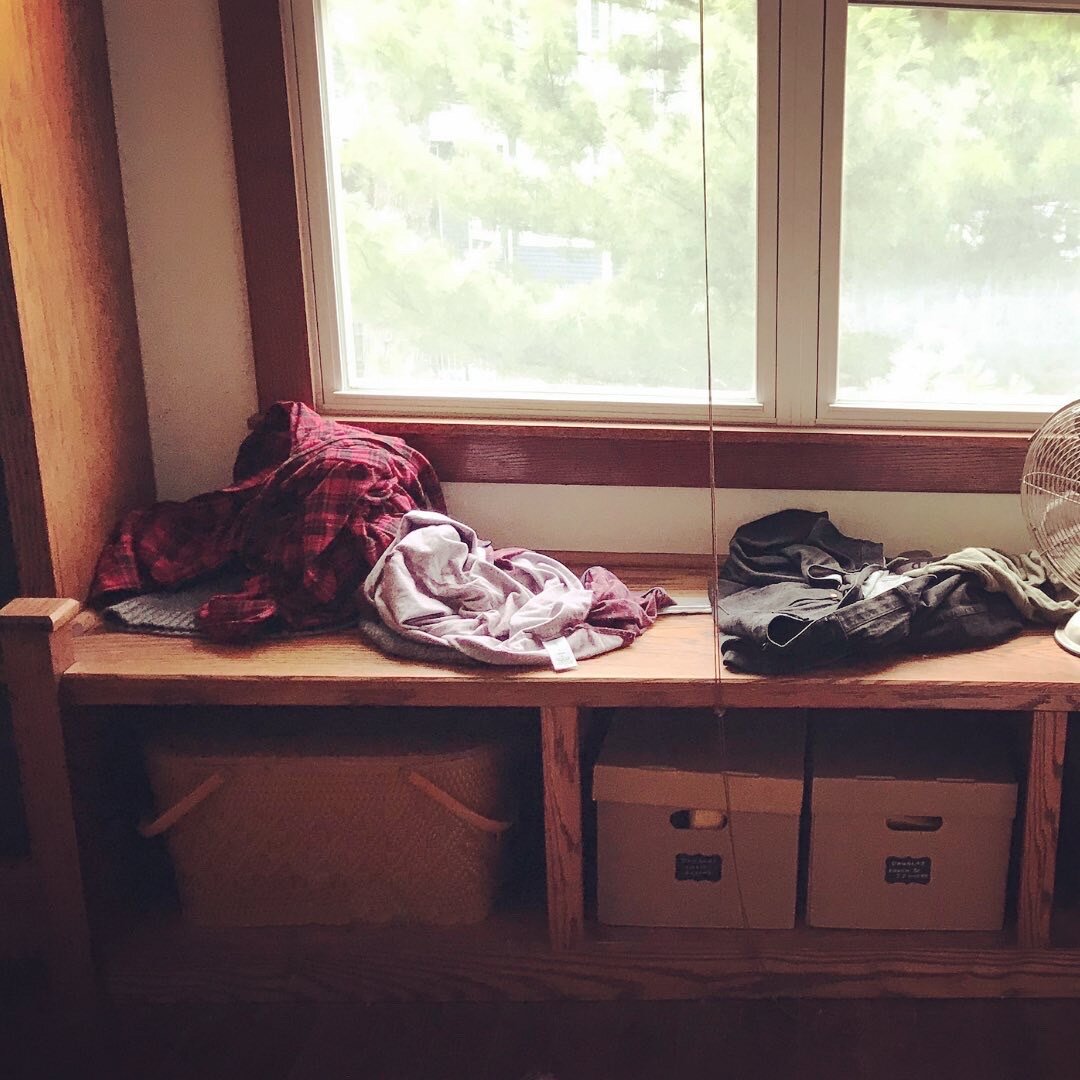So many beautiful baskets and bins. Sometimes it's like they almost might have magic powers!
"Look at these great bins. If I had these, I just know I'd be more organized!"
With all the beautiful bins, boxes, and baskets available for purchase, it can sometimes be hard to remember one important thing: Organizing is the process of sorting, making decisions, and finally choosing a home for each item. It's not the process of putting items into containers so they look pretty.
Organizing has two parts: Deciding what to have, and deciding where to put it.
This means that decisions come first. You'll choose to keep things that you love, need, and use, while discarding things that are not serving you. When you're done deciding what belongs in your life, that's the time to choose where to put things, based on when, where, and how often you use them. Storage is the very last step in the organizing process.
I know how tempting it is to rush out to the Container Store or Target when you've decided you want to organize your home. There are some seriously lovely containers out there—sometimes it's like they almost might have magic powers. You're certainly not alone if you've ever thought, "Look at these great bins. If I had these, I just know I'd be more organized!" But simply putting all your belongings into containers as a first step, will only give the illusion of organization. I have been in many homes where there are plenty of containers, yet there is not a system that works.
Here are a few common container errors.
The wrong type of containers being used, so that it actually creates more work rather than making things easier.
Example: using containers with very high walls inside a narrow, deep cabinet. It's difficult to reach into the container to retrieve items, so they sit there not being used. When more items are purchased, they get put in front of the containers, not in them. The result is duplication and clutter.
Example: using opaque containers instead of clear in situations where you need to be able to quickly see what's inside (to determine how much bird seed you have left, or printer paper, or whatever). This may be more important to you if you're a very visual person.
Example: very large containers used to store heavy items such as books. You wind up with a very heavy and bulky container that's difficult to move.
Containers or other storage solutions that seem like a clever idea, but don't fit the space.
Example: a client had purchased a "gravity can feeder" (the wire kind, where cans are placed sideways so they can roll forwards). But when they put it together, there was not one cabinet or shelf in the entire kitchen that was big enough for this storage item to fit.
Allowing the size and shape of a container, rather than the contents and frequency of use, to dictate where you'll store something.
Example: Super tall clear acrylic canisters didn't fit in any of the logical places a client wanted to store frequently-used baking supplies. They then began to explore storing the containers sideways, or in a lower, more distant cabinet. Eventually they agreed that these canisters, while very pretty, just didn't provide the functionality they needed in their kitchen.
Have a clear idea how new containers will be used. And measure first before you go to the store!
Tips for buying containers:
Sort and discard first, so that you know what and how much you need to store
Consider if you can use a container you already own instead of buying new
Have a clear idea how new containers will be used
Before leaving the house to go to the store, measure the space the containers will go in
Consider whether you want clear or opaque containers. How important is it to see the items inside?
Pay attention to the height of the container walls. How important is it to be able to reach in and retrieve items?
With a little thought and planning ahead, and remembering that storage comes last, common container errors can be avoided and you can create a home that's functional as well as beautiful.
Bins don't have the power to create a system
Final thoughts: One of the biggest challenges in organizing is that many items can have emotional significance. This includes containers. Buying aspirational containers can be an expression of our desire to have things be different, to live a more organized life. It's important to remember that bins don't have the power to create a system. Nor do they have the power to change your habits, shopping patterns, ways of thinking, or other factors that may be contributing to feeling cluttery and overwhelmed. Only you have that power!
Looking for guidance in your home organizing journey? As a professional organizer, I'm here to help. Reach out for your free 30-minute consultation. 🌱





